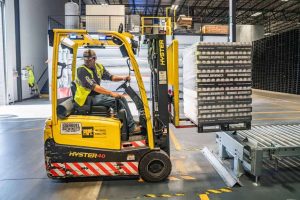
As you have learned, the overhead needs to be allocated to the manufactured product in a systematic and rational manner. This allocation process depends on the use of a cost driver, which drives the production activity’s cost. Examples can include labor hours incurred, labor costs paid, amounts of materials used in production, units produced, or any other activity that has a cause-and-effect relationship with incurred costs. If the volume of goods produced varies from month to month, the actual rate varies from month to Bookkeeping for Etsy Sellers month, even though the total cost is constant from month to month. The allocation of overhead to the cost of the product is also recognized in a systematic and rational manner.

5.4 Assigning Manufacturing Overhead Costs to Jobs
Note that the manufacturing overhead account has a debit balance when overhead is underapplied because fewer costs were applied to jobs than were actually incurred. When this journal entry is recorded, we also record overhead applied on the appropriate job cost sheet, just as we did with direct materials and direct labor. Figure 2.6 shows the manufacturing overhead applied based on the six hours predetermined overhead rate worked by Tim Wallace. Notice that total manufacturing costs as of May 4 for job 50 are summarized at the bottom of the job cost sheet. Figure 8.41 shows the monthly manufacturing actual overhead recorded by Dinosaur Vinyl. As explained previously, the overhead is allocated to the individual jobs at the predetermined overhead rate of $2.50 per direct labor dollar when the jobs are complete.

Selecting an Estimated Activity Base
- Fixed overhead costs are costs that do not change even while the volume of production activity changes.
- If actual manufacturing over head cost is applied to jobs, the company must wait until the end of the accounting period to apply overhead and to cost jobs.
- Manufacturing overhead costs include all manufacturing costs except for direct materials and direct labor.
- Electricity is a cost that can vary from month to month and is a variable overhead cost unless it is part of the production process.
- The cost of some of these items can vary based on the job or number of units produced and may require job-order costing or activity-based costing.
However, allocating more overheadcosts to a job produced in the winter compared to one produced inthe summer may serve no useful purpose. The movie industry uses job order costing, and studios need to allocate overhead to each movie. Their amount of allocated overhead is not publicly known because while publications share how much money a movie has produced in ticket sales, it is rare that the actual expenses are released to the public. Overhead expenses are what it costs to run the business, including rent, insurance, and utilities. Overhead expenses should be reviewed regularly in order to increase profitability.
What is the applied overhead?
Fixed overhead costs are costs that do not change even while the volume of production activity changes. Fixed costs are fairly predictable and fixed overhead costs are necessary to keep a company operating smoothly. Indirect costs are costs that are not directly traceable to an activity or product. Cost objects are items for which costs are compiled, such as products, product lines, customers, retail stores, and distribution channels. In short, the main difference between the two concepts is that actual overhead is the amount of cost actually incurred, while applied overhead is the standard amount of overhead applied to cost objects. Although this approach is not as common as simply closing the manufacturing overhead account balance to cost of goods sold, companies do this when the amount is relatively significant.

Dividing expenses by operating and overhead help to set prices accordingly and increase profit margins. Manufacturing operating expenses typically are comprised of machines, direct materials cost, direct labor hours and actual machine hours needed to manufacture a product. The cost of some of these items can vary based on the job or number of units produced and may require job-order costing or activity-based costing. Recall from Chapter 1 that manufacturing overhead consists of all costs related to the production process other than direct materials and direct labor. Because manufacturing overhead costs are difficult to trace to specific jobs, the amount allocated to each job is based on an estimate. The process of creating this estimate requires the calculation of a predetermined rate.

A clearing account is used to hold financial data temporarily and is closed out at the end of the period before preparing financial statements. •A company usually does bookkeeping not incur overhead costs uniformly throughout the year. However, allocating more overhead costs to a job produced in the winter compared to one produced in the summer may serve no useful purpose. Under generally accepted accounting principles (GAAP), absorption costing is required for external reporting. Absorption costing is an accounting method that captures all of the costs involved in manufacturing a product when valuing inventory.
- As more and more products are produced, the greater the effect on profitability.
- Second, the manufacturing overhead account tracks overhead costs applied to jobs.
- Applied overhead is a fixed rate charged to a specific production job, good produced, or department within a company.
- Overhead expenses are items that are required to sell products and run the company in general.
- The goal is to allocate manufacturing overhead costs to jobs based on some common activity, such as direct labor hours, machine hours, or direct labor costs.
Boeing Company is the world’s leading aerospace company and the largest manufacturer of commercial jetliners and military aircraft combined. Boeing provides products and services to customers in 150 countries and employs 165,000 people throughout the world. Dinosaur Vinyl uses the expenses from the prior two years to estimate the overhead for the upcoming year to be $250,000, as shown in Figure 8.38.
